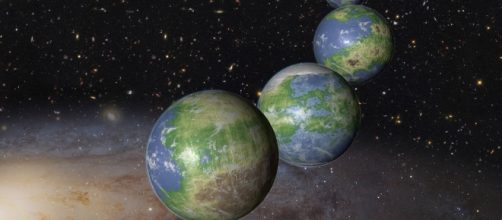NASA has announced that the Spitzer Space Telescope has confirmed the presence of seven Earth-sized planets orbiting a star called TRAPPIST-1 named for The Transiting Planets and Planetesimals Small Telescope (TRAPPIST) in Chile. Last year TRAPPIST confirmed the presence of three Earth sized planets. Spitzer has upped that number, placing three of them in the star’s Habitable Zone.
The star in question is a super cool dwarf about 40 light years away from Earth. The star puts out so little heat that the seven planets orbit it closer than Mercury does the Sun.
Scientists are conducting follow up studies of the new system using the Hubble Space Telescope and plan to continue with the James Webb Space Telescope once it has been deployed.
While no assurance exists that any of these planets contain life, the fact of the matter is that the discovery of so many Earth-sized planets where liquid water, a necessary precursor for life, is unprecedented in the history of astronomy. The discovery represents the best chance thus far of finding life that has evolved beyond this planet.
The planets could be so close to their home star that they could be tidally locked, meaning that one side permanently faces the star and one away from it, much like the moon is to the Earth.
What such a phenomenon would mean for weather patterns, not to mention the evolution of life, can only be speculated on at the current time.
Even if life has not yet evolved on any of the seven planets, it has more than enough time. The star burns so little hydrogen that it is likely to last for trillions of years, far beyond the time that the sun burns out.
On the other hand, even if none of the seven Earth-like worlds contain life, future space settlers could very well, terraform them to make them more habitable and then establish new homes beyond the interstellar gulfs. Considering the likely longevity of the star, one can imagine that such a project would ensure the survival of the human race (or whatever evolves beyond homo sapiens) for an almost unimaginable timespan.

